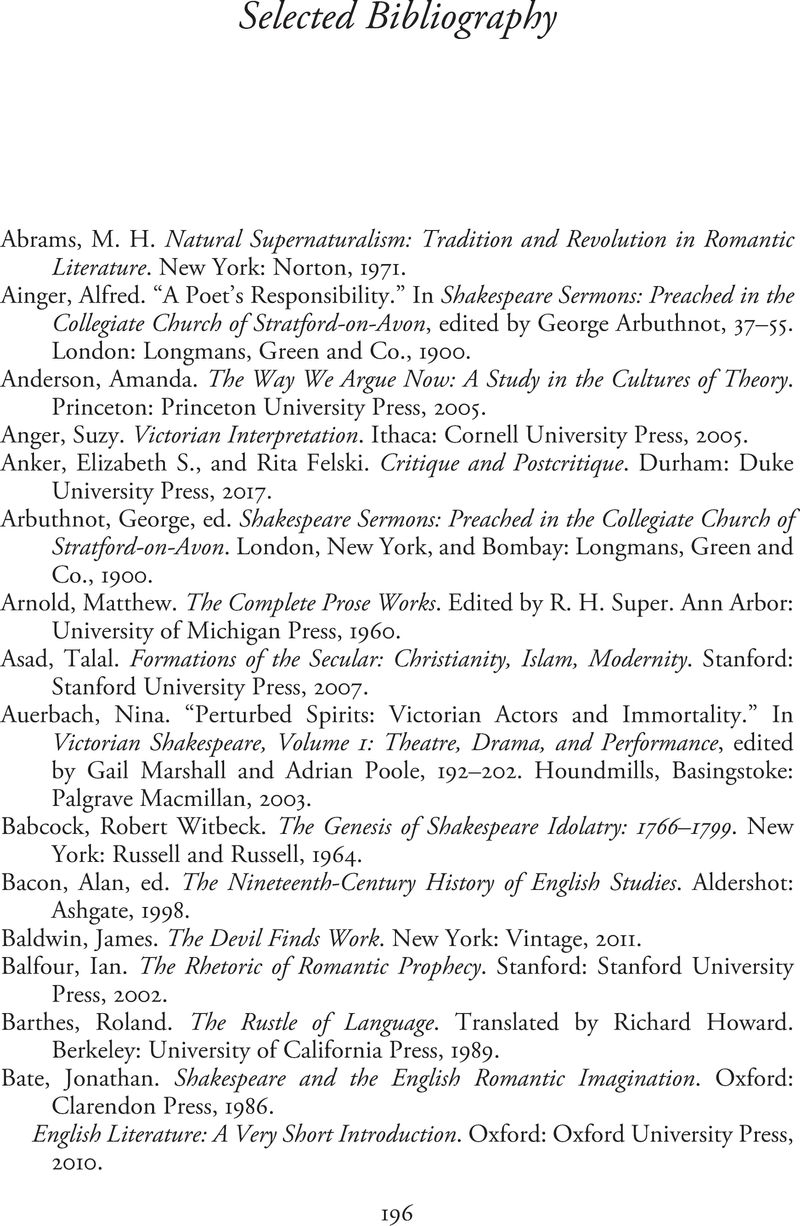Book contents
- The Victorian Cult of Shakespeare
- Cambridge Studies In Nineteenth-Century Literature And Culture
- The Victorian Cult of Shakespeare
- Copyright page
- Dedication
- Contents
- Figures
- Preface
- Acknowledgments
- Introduction
- Chapter 1 Shakespearean Sermons and Other Pious Texts
- Chapter 2 The Harmonies and Beauties of Devotional Shakespeare Volumes
- Chapter 3 The Sonnets and the Messiah
- Chapter 4 The Authority of the (Missing) Author
- Chapter 5 Shakespearean Clerisies and Perfect Texts
- Conclusion: Concealed Wonders and Choice Treasures
- Notes
- Selected Bibliography
- Index
- Cambridge Studies in Nineteenth-Century Literature and Culture
- References
Selected Bibliography
Published online by Cambridge University Press: 30 October 2020
- The Victorian Cult of Shakespeare
- Cambridge Studies In Nineteenth-Century Literature And Culture
- The Victorian Cult of Shakespeare
- Copyright page
- Dedication
- Contents
- Figures
- Preface
- Acknowledgments
- Introduction
- Chapter 1 Shakespearean Sermons and Other Pious Texts
- Chapter 2 The Harmonies and Beauties of Devotional Shakespeare Volumes
- Chapter 3 The Sonnets and the Messiah
- Chapter 4 The Authority of the (Missing) Author
- Chapter 5 Shakespearean Clerisies and Perfect Texts
- Conclusion: Concealed Wonders and Choice Treasures
- Notes
- Selected Bibliography
- Index
- Cambridge Studies in Nineteenth-Century Literature and Culture
- References
Summary

- Type
- Chapter
- Information
- The Victorian Cult of ShakespeareBardology in the Nineteenth Century, pp. 196 - 208Publisher: Cambridge University PressPrint publication year: 2020

